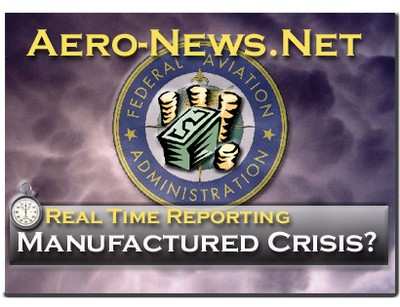Analysis: AOPA Chimes In On Trust Fund Controversy
Transportation Secretary Norm Mineta and FAA Administrator
Marion Blakey are using every available public opportunity to
predict an FAA funding meltdown by 2007. However, according to the
White House Office of Management and Budget (OMB), revenue into the
trust fund will be up 53 percent. At a May 4th House aviation
subcommittee hearing, AOPA President Phil Boyer cited the OMB
prediction of aviation trust fund surpluses out to the year 2010.
It might not be as bad as painted," Boyer told the committee, as he
showed them a chart of the OMB's projections predicting the growth
in trust fund revenue.

In addition, the FAA's independent Management Advisory Council
weighed in by stating, "In sum, trust fund revenues are not
expected to be the problem going forward," in a May 17th
report.
So how bad is it really, and why do even the government's own
experts disagree?
"It all has to do with how you keep the books," said Andy
Cebula, AOPA senior vice president of government and technical
affairs. "Keep the traditional spending formula, and there's no
problem. Change the formula, and the FAA runs out of money."
So why monkey with a formula that works? The details are
complex, but we'll try to make it as painless as possible.
The Aviation Trust Fund And The General Fund
 The FAA has two funding sources --
the general fund and the aviation trust fund. Trust fund money can
only be spent on aviation, but general funds are up for grabs by
everybody. Hence the politics. The Bush administration wants to cut
almost in half the amount of general fund money dedicated to the
FAA. If that happens, current aviation taxes alone aren't enough to
meet the FAA's growing budget, particularly the burgeoning
operations costs. Simple as that. The trust fund isn't failing;
they're just trying to change the rules.
The FAA has two funding sources --
the general fund and the aviation trust fund. Trust fund money can
only be spent on aviation, but general funds are up for grabs by
everybody. Hence the politics. The Bush administration wants to cut
almost in half the amount of general fund money dedicated to the
FAA. If that happens, current aviation taxes alone aren't enough to
meet the FAA's growing budget, particularly the burgeoning
operations costs. Simple as that. The trust fund isn't failing;
they're just trying to change the rules.
Okay, now for the messy details.
The bulk of the FAA's budget comes from the aviation trust fund
(more properly called the Airport and Airway Trust Fund). The trust
fund gets its money from taxes on aviation fuel, airline tickets,
and airfreight and a few small miscellaneous aviation-related
taxes.
But for the government as a whole, the money for aviation is
appropriated from the general fund. When you pay your taxes on
April 15, the money goes into the general fund, as do most federal
taxes and fees. The general fund also pays for many federal
programs, from the Department of Defense to the weather service.
That means there are a lot of hands dipping into the general fund,
lots of programs with powerful congressional allies. More programs
than funds, actually, and the FAA is a very small fish in the
general fund ocean.
What Was The Aviation Trust Built To Do?
When Congress created the aviation trust fund in 1970, the
intention was that it pay for "capital" improvements such as
runways, radios, radars, and other hardware and infrastructure.
The general fund was supposed to pay for "operations" —
paper clips to personnel salaries. Because the general public
benefits from the FAA's regulatory and safety functions, taxes on
everybody should help pay for them. And with the FAA's greater
responsibilities now for homeland security, there is even a
stronger argument for the general fund paying for some of the
agency's operations.
But restricting trust fund monies to capital improvements didn't
last long. Remember that while general funds can be spent on
anything, aviation trust funds can only be spent on aviation. So if
you pay more of the FAA's expenses with aviation trust funds,
general funds can be spent on other programs.
And that's exactly what happened. The executive branch
immediately began dipping into the trust fund for operational
expenses, regardless of the law. By 1975, Congress accepted the
inevitable and changed the law to allow "some" aviation trust funds
to be spent on FAA operations but established various rules and
formulas to ensure that infrastructure improvements got priority
over operations for trust fund spending.
Meanwhile, the general fund "contribution" dropped from a high
of about half of the FAA's budget to zero in some years. This year
(fiscal year 2005), the general fund contribution is 20
percent.
But the Bush administration wants to drop the contribution from
general tax revenues lower, to about 13 percent. That means that
even more of the aviation trust fund would go toward FAA
operations.
If the general fund picks up a much smaller proportion of the
FAA's expenses, some experts predict that the FAA's draw on the
trust fund account will exceed the taxes coming in, and in a few
short years, the trust fund surplus will be exhausted.
Whatever Happened To The Surplus?
Surplus? Yeah, weren't we talking about spending the surplus on
aviation just a few years ago?
 Yes, we were. For years there was a
surplus, in part because it made the government's overall balance
sheet look better. (If you have a surplus in a trust fund account,
it can be used to offset a deficit elsewhere.) But then two things
started eroding the surplus — an increasing amount of trust
fund money being spent on aviation infrastructure and more trust
fund money being used for operations.
Yes, we were. For years there was a
surplus, in part because it made the government's overall balance
sheet look better. (If you have a surplus in a trust fund account,
it can be used to offset a deficit elsewhere.) But then two things
started eroding the surplus — an increasing amount of trust
fund money being spent on aviation infrastructure and more trust
fund money being used for operations.
AIR-21, passed into law in 2000, required that all revenue
coming into the trust fund be spent. And it required that the
airport improvement program and the FAA's facilities and equipment
program be fully funded. That meant that more money started flowing
out of the trust fund — a good thing for aviation.
But at the same time, more and more of the money that was
intended for capital improvements was going to operations. In 1980,
the trust fund supported about 20 percent of the FAA's operations
costs. Today the trust fund pays for 63 percent of operations.
The 9/11 Effect -- And Then There Are The LCCs
But what about 9/11 and low-cost carriers? Didn't they affect
the income to the trust fund?
Trust fund income did drop after 9/11, but now it's back up, and
trust fund revenue is expected to reach an all-time-record high of
$10.5 billion this year.
The FAA also says that low-cost carriers and regional jets have
contributed to a decline in trust fund revenue and an increase in
FAA's costs. And there is a certain intuitive logic to that. Since
the ticket tax is — in part — a percentage of the
ticket price, more low-cost tickets should theoretically reduce the
amount of revenue.
But it hasn't. If you track trust fund income relative to the
number of air traffic control operations, they hold pretty
constant. Operations go up, revenue goes up by about the same
percentage. So even though the average ticket price has gone down,
there hasn't been a correlating drop in trust fund revenue.
Part of the reason may be the other part of the ticket tax.
While there is a 7.5 percent tax on each ticket, there is also a
segment tax (currently $3.20) on each ticket for each stop. That
tax is indexed to inflation, not the ticket price.
 So here are some bottom line points
to take away from all of this:
So here are some bottom line points
to take away from all of this:
- Aviation trust fund income is increasing and is predicted to
continue growing.
- There is no direct correlation between operations and the FAA's
"cost of doing business." The FAA's costs have increased much more
rapidly than general inflation or the amount of service
provided.
- If the general fund contribution to the FAA's total budget
remains at 20 percent, there is no funding crisis. There's enough
money to go around.
"In the end, we will need to determine whether there is the
political will to maintain a reasonable level of general funds to
the FAA," said Cebula. "AOPA's position is three fold: First,
aviation taxes are the fairest, most efficient way to finance the
FAA. No user fees! Second, because of the public benefits derived
from FAA activities, the general fund should pay at least 20
percent of the FAA's budget. Finally, the FAA must get costs under
control, and we in the industry will do everything we can to
identify ways to make the FAA more efficient."
 ANN's Daily Aero-Linx (04.16.24)
ANN's Daily Aero-Linx (04.16.24) Aero-News: Quote of the Day (04.16.24)
Aero-News: Quote of the Day (04.16.24) Airborne 04.10.24: SnF24!, A50 Heritage Reveal, HeliCycle!, Montaer MC-01
Airborne 04.10.24: SnF24!, A50 Heritage Reveal, HeliCycle!, Montaer MC-01 Airborne 04.12.24: SnF24!, G100UL Is Here, Holy Micro, Plane Tags
Airborne 04.12.24: SnF24!, G100UL Is Here, Holy Micro, Plane Tags Airborne-Flight Training 04.17.24: Feds Need Controllers, Spirit Delay, Redbird
Airborne-Flight Training 04.17.24: Feds Need Controllers, Spirit Delay, Redbird






